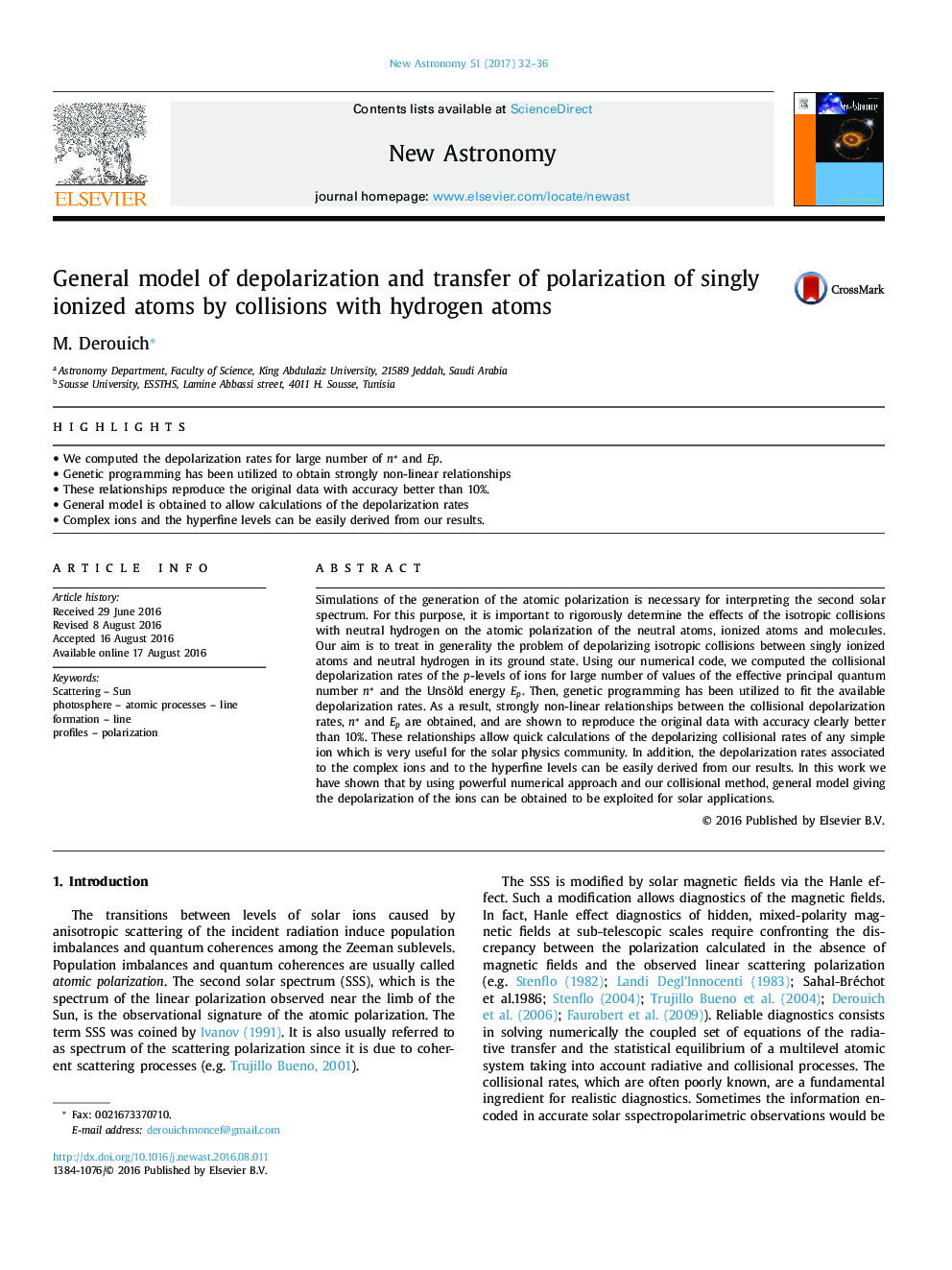| Article ID | Journal | Published Year | Pages | File Type |
|---|---|---|---|---|
| 1778670 | New Astronomy | 2017 | 5 Pages |
•We computed the depolarization rates for large number of n* and Ep.•Genetic programming has been utilized to obtain strongly non-linear relationships•These relationships reproduce the original data with accuracy better than 10%.•General model is obtained to allow calculations of the depolarization rates•Complex ions and the hyperfine levels can be easily derived from our results.
Simulations of the generation of the atomic polarization is necessary for interpreting the second solar spectrum. For this purpose, it is important to rigorously determine the effects of the isotropic collisions with neutral hydrogen on the atomic polarization of the neutral atoms, ionized atoms and molecules. Our aim is to treat in generality the problem of depolarizing isotropic collisions between singly ionized atoms and neutral hydrogen in its ground state. Using our numerical code, we computed the collisional depolarization rates of the p-levels of ions for large number of values of the effective principal quantum number n* and the Unsöld energy Ep. Then, genetic programming has been utilized to fit the available depolarization rates. As a result, strongly non-linear relationships between the collisional depolarization rates, n* and Ep are obtained, and are shown to reproduce the original data with accuracy clearly better than 10%. These relationships allow quick calculations of the depolarizing collisional rates of any simple ion which is very useful for the solar physics community. In addition, the depolarization rates associated to the complex ions and to the hyperfine levels can be easily derived from our results. In this work we have shown that by using powerful numerical approach and our collisional method, general model giving the depolarization of the ions can be obtained to be exploited for solar applications.
